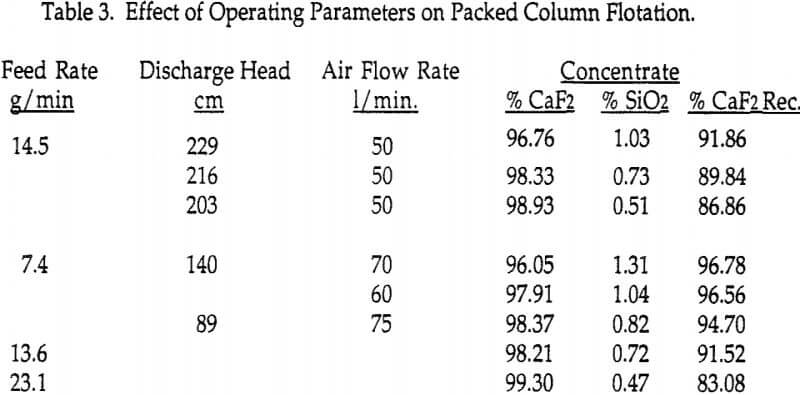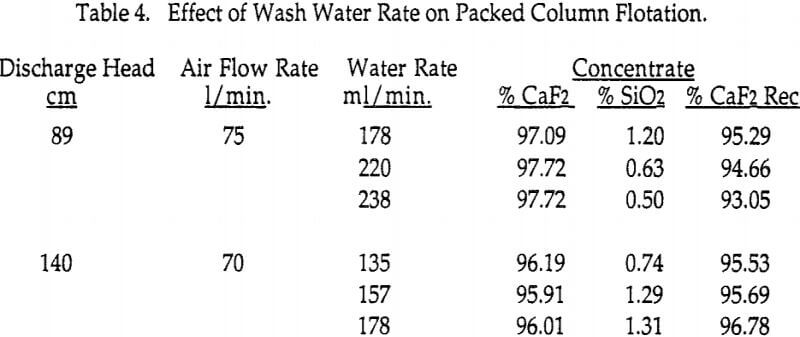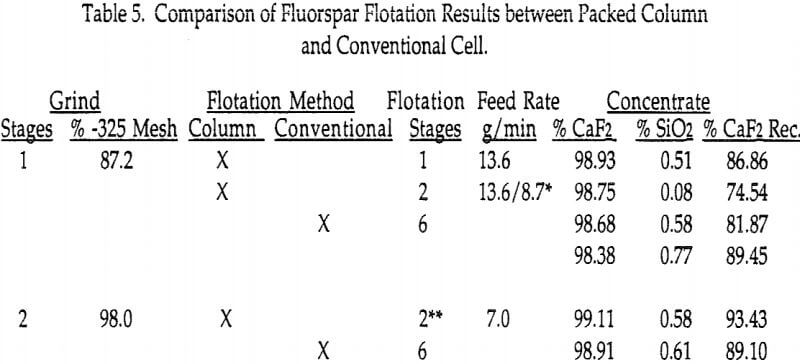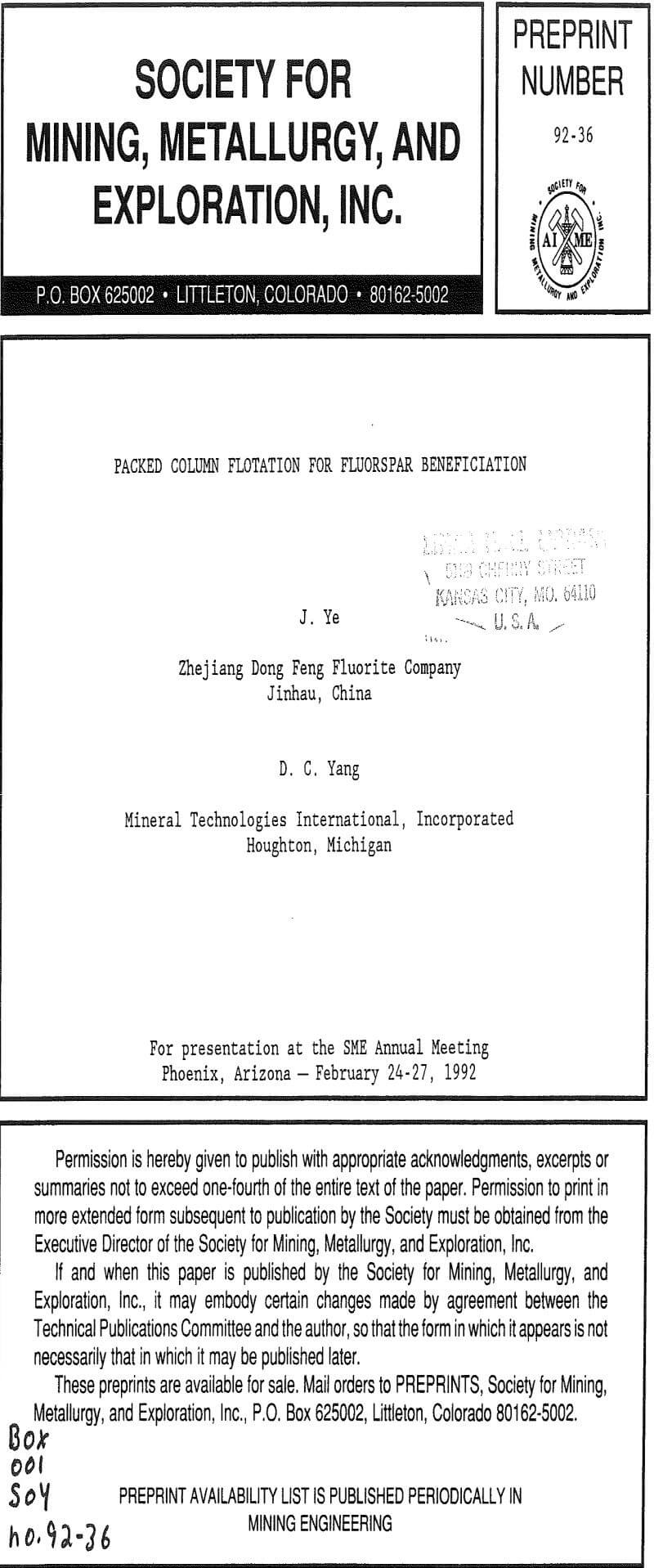Acid-grade fluorspar is utilized in the production of hydrofluoric acid from which a variety of organic and inorganic fluoride chemicals are made, including synthetic cryolite and elemental fluorine. The manufacture of chlorofluorocarbons (CFCs) is the volume leader in the fluorine chemical industry. Price and market specifications for fluorspar depend on supply and demand, and often differ with locations as well as governmental control or regulations. Recently quoted figures, for example, call for a minimum 97% CaF2, maximum 1% SiO2 and 1% CaCO3.
All tests were carried out on a run-of-mine fluorspar ore taken from Dong Feng Fluorite Company in Zhejiang Province, China. The ore was crushed to a nominal top size of ten mesh and split into 600g charges. Petrographic analysis of the sample which typically contains 42% CaF2, 55% SiO2, 0.7% CaCO3, 0.01% P and 0.03% S indicates that the major constituents are fluorite and quartz, with minor amounts of calcite, feldspar, apatite, and pyrite.
A series of batch flotation tests were carried out on 600g charges of the ground feed using a Model D-12 Denver machine with impeller speed set at 1,100 rpm. For conditioning, the slurry was poured into the cell and diluted with water to 20% solids. Sodium carbonate was then added to adjust the pH between 8 and 9 while the machine was stirring. This was followed by addition of sodium silicate for three minutes and then oleic acid for additional five minutes.
The MTU laboratory packed column (4.6 cm ID x 244 cm high) was used for the testwork designed to duplicate the same reagent scheme used in the batch tests. The conditioned feed slurry with 20% solids was continuously pumped into the column near the mid-height. Air introduced from an air inlet located near the bottom of the column, forming small bubbles through the tortuous paths in conformity with the packing structure, made an intimate contact with the descending slurry.
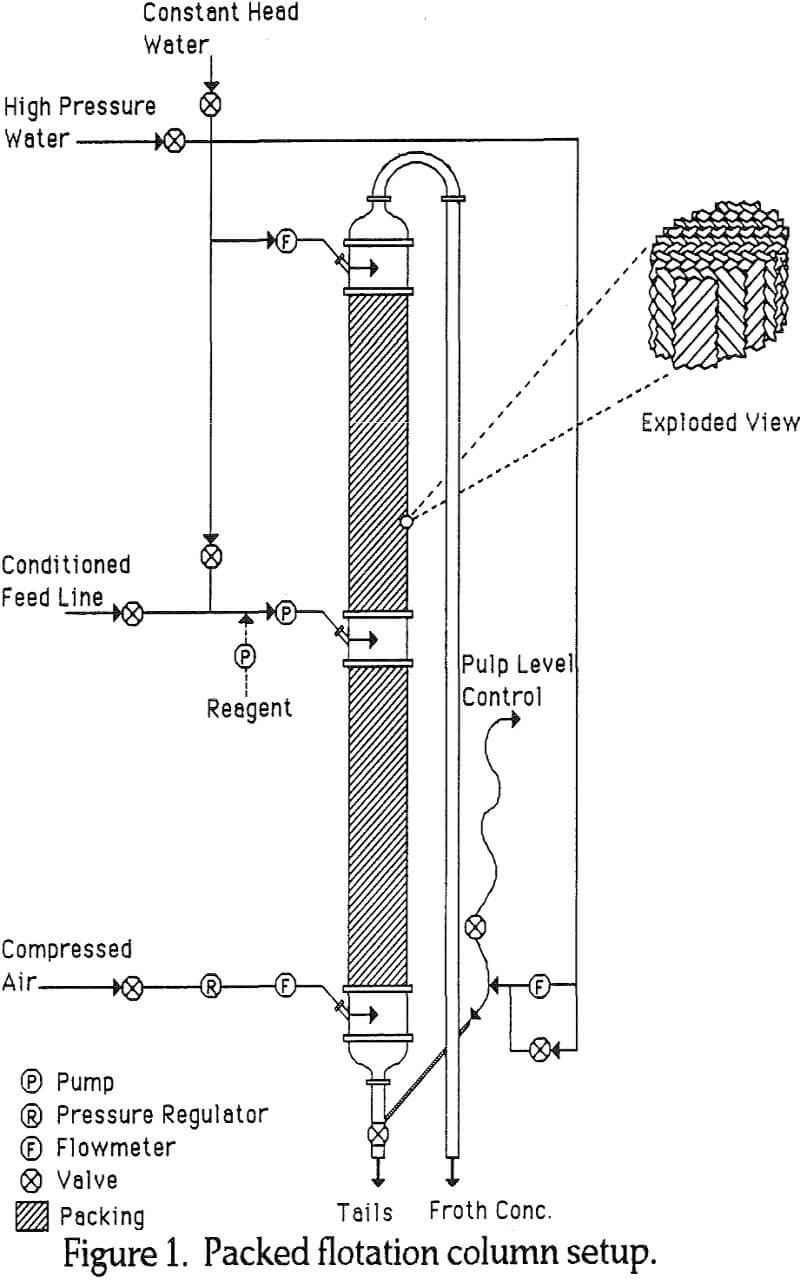
The recovery reached a maximum at particle size of 87.2% minus 325 mesh, but decreased rapidly as the sample was further ground to 96.7% minus 325 mesh which might be the result of reagent starvation.
Regrind of rougher concentrate followed by further cleaning improved the separation. To determine the proper grind size, one should consider the balance of the liberation size of the mineral to be recovered and the effect of overgrinding which is very energy intensive and hinders the flotation selectivity of the ore.
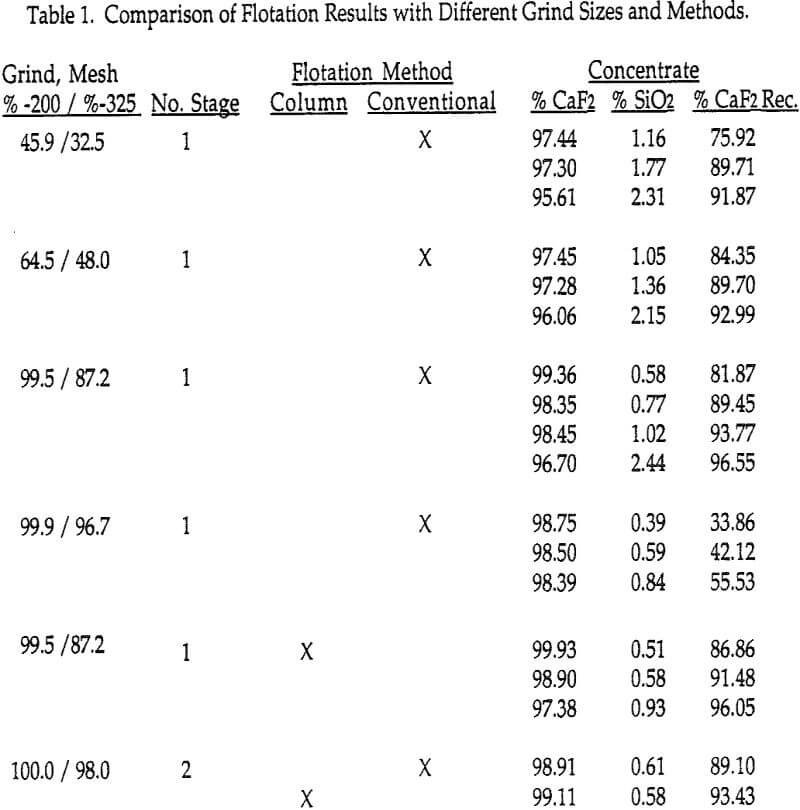
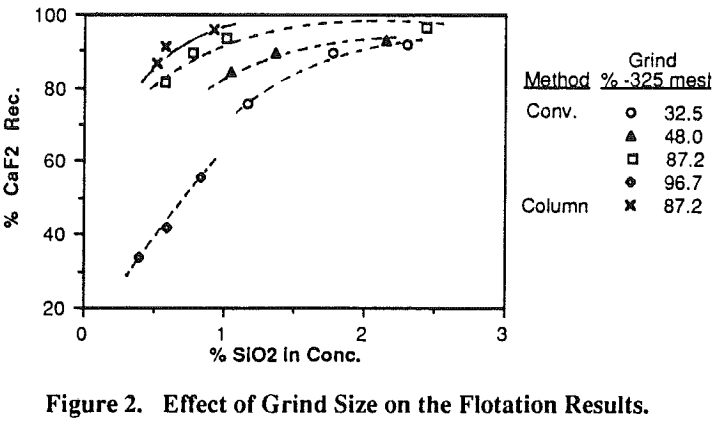
A higher recovery with lower impurity SiO2 of concentrate was obtained from the packed column flotation than that from the conventional machine flotation with the feed of same grind size and similar reagent package. The size recoveries in finer fractions, however, had a significant influence on the overall flotation performance.
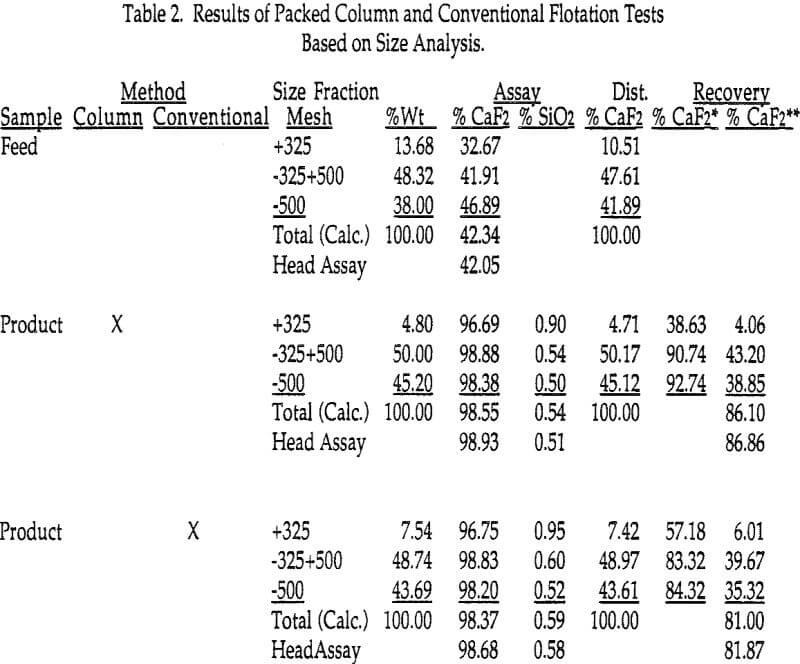
The Effect of Operating Parameters on Packed Column
